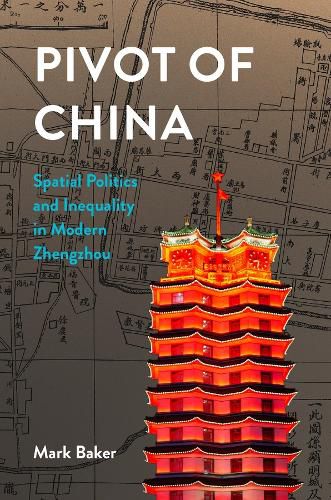Readings Newsletter
Become a Readings Member to make your shopping experience even easier.
Sign in or sign up for free!
You’re not far away from qualifying for FREE standard shipping within Australia
You’ve qualified for FREE standard shipping within Australia
The cart is loading…






China's modern history has been marked by deep spatial inequalities between regions, between cities, and between rural and urban areas. These inequalities have variously been attributed to the dualistic economy of semi-colonialism, rural-urban division in the socialist period, and capital concentration in the reform era. In Pivot of China, Mark Baker argues that different states across twentieth-century China shaped these inequalities in similar ways, concentrating resources in urban and core areas at the expense of rural and regional peripheries.
Pivot of China tells this story through the city of Zhengzhou, one of the most dramatic success stories of China's urbanization: a railroad boomtown of the early twentieth century, a key industrial center and provincial capital of Henan Province in the 1950s, and by the 2020s a "National Central City" of almost ten million people. However, due to the spatial politics of resource concentration, Zhengzhou's twentieth-century growth as a regional city did not kickstart a wider economic takeoff in its hinterland. Instead, unequal spatial politics generated layers of inequality that China is still grappling with in the twenty-first century.
$9.00 standard shipping within Australia
FREE standard shipping within Australia for orders over $100.00
Express & International shipping calculated at checkout
China's modern history has been marked by deep spatial inequalities between regions, between cities, and between rural and urban areas. These inequalities have variously been attributed to the dualistic economy of semi-colonialism, rural-urban division in the socialist period, and capital concentration in the reform era. In Pivot of China, Mark Baker argues that different states across twentieth-century China shaped these inequalities in similar ways, concentrating resources in urban and core areas at the expense of rural and regional peripheries.
Pivot of China tells this story through the city of Zhengzhou, one of the most dramatic success stories of China's urbanization: a railroad boomtown of the early twentieth century, a key industrial center and provincial capital of Henan Province in the 1950s, and by the 2020s a "National Central City" of almost ten million people. However, due to the spatial politics of resource concentration, Zhengzhou's twentieth-century growth as a regional city did not kickstart a wider economic takeoff in its hinterland. Instead, unequal spatial politics generated layers of inequality that China is still grappling with in the twenty-first century.